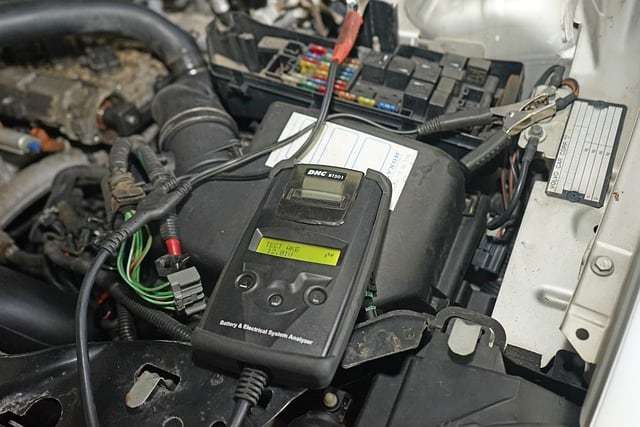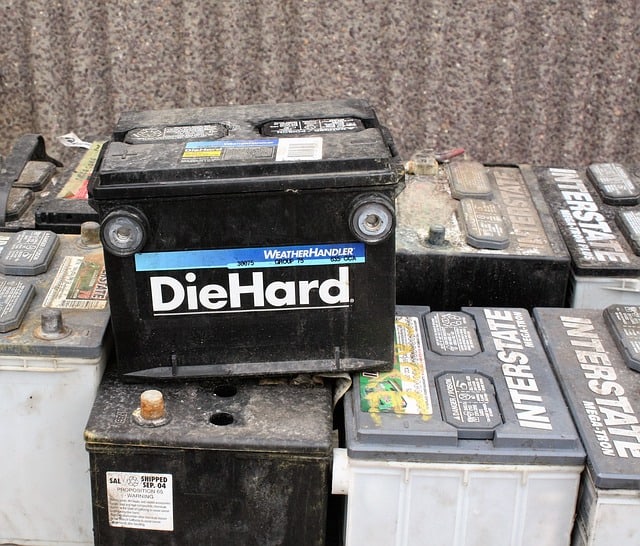Last Updated on March 30, 2023 by Chase Manhattan
To prevent your car battery from dying while you are on the road, you need to regularly change the battery. Usually, car owners change the battery once it gives up. A dead car battery can leave you stranded at the wrong time though. Here’s everything you need to know about replacing a car battery.
Car batteries, on average, last for 3-4 years. It depends on the type of car battery, and how well the battery is maintained. Car batteries are prone to self-discharge, so they eventually go bad after a few years. Some are faster than others. A badly maintained battery can last only for a year.
A healthy car battery means you will have a reliable start and a healthy electrical system. Read this guide if you need help with replacing a car battery.
[Car Battery Keeps Dying]Quick Navigation
When To Replace A Car Battery

As already mentioned, car batteries have a limited lifespan, regardless of maintenance. More so, car batteries can corrode in some conditions. This damages the capacity of the battery even further.
Changing a car battery is something you do as a part of regular maintenance. The average lifespan of car batteries is 3-4 years. Some batteries can last up to 5 years. Some batteries last only 1-2 years. [Source]
- You should replace your battery after 3-4 years.
- You should replace your battery if it’s corroded.
- You should replace your battery when it starts to self-discharge.
A car battery should be changed when it’s old, or when it’s damaged. There’s no reason to change a healthy car battery that still has some years left.
The most common car batteries are VRLA batteries. These usually last 3-4 years. However, some types of car batteries do not have corrosion protection, so they go bad in cold temperatures. Some types of car batteries require maintenance so they go bad when neglected.
Lithium-ion car batteries have the longest lifespan. They can last up to 5-6 years. However, lithium-ion batteries are mostly used on electrical or hybrid cars. Wet cells batteries, also known as flooded-lead batteries have the shortest lifespan. Mostly because these batteries require a lot of maintenance and go bad if dropped below 50% status charge.
[Reasons Why Car Batteries Won’t Charge]Car batteries corrode in cold weather and moist areas. When it’s cold, the chemistry inside the battery changes, causing the battery to corrode. This diminishes the capacity of the battery. [Source]
AGM car batteries and Silver Calcium batteries are corrosion-resistant. These types of car batteries won’t have problems with corrosion and staying alive in the cold.
Self-discharge is another reason why car batteries go bad before their expected lifespan. Self-discharge is caused by dirt, and discharging the battery to a low-status charge, and then not charging it.
Forgetting headlights on, and other electrical equipment can cause the battery to self-discharge. When the battery is completely dead, most car owners do not charge it properly. If this happens often, the battery starts to self-discharge all the time.
Signs Of A Bad Car Battery

- Dimmed headlights.
A bad car battery won’t be able to supply enough power for the entire electrical system. Although it may be able to start the car, the headlights will be dimmed. You will notice this when driving at night where there’s not a lot of lights. - Car struggles to start.
A bad car battery will not have enough cranking amps to start the car. Newer batteries are designed to start the engine even when they are at 0% status charge. So, you will notice that your car is stalling when you are trying to start it. Or, you will hear clicking sounds from the key. Basically, your car will be struggling to start. - Car won’t start at all.
If the battery is completely dead, it won’t be able to start the car at all. You will not even hear clicking sounds. Turning the ignition does nothing on a completely dead battery. The car won’t be stalling nor struggling, it just won’t start at all. - Electrical system not working properly.
With a bad car battery, the entire electrical system will not be working properly. This is why the headlights are dimmed. Try to notice anything else wrong with the electrical system. - Dashboard showing the car battery sign.
Some cars will warn you when you have a bad battery. Keep an eye on the dashboard. If there is something wrong with the battery, there will be a sign of a car battery.
How To Test A Car Battery
Instead of keeping an eye on the signs for a bad car battery, you can just test. This is a simple test that anyone can do at home. All you will need is a multimeter. This device measures the current voltage of the battery while the engine is off, and while the engine is running.
Here, you can find out more about car battery voltage. If you want to do the test, check out the video tutorial below.
Car Battery Replacement Cost
The only cost to replace a car battery is the actual car battery. Car batteries can be cheap and expensive. The cost of replacing a car battery depends on how much power your car needs, and the size of the battery. Of course, the better the brand, the higher the price.
On average, replacing a car battery costs 45$-250$. High-quality car batteries will cost more because they last more and are protected from self-discharge and corrosion.
Usually, the place you are buying the battery from replaces the battery. You can do it yourself though. Keep in mind, places that sell car batteries offer a discount if you give them your old car battery.
[How To Change A Car Battery]How Long Should A Car Battery Last Without Driving
Well, the answer is a bit of a vague one. You see, when a car battery is sitting idle, it’s chemical energy does not change (the reaction from the sulfuric acid and the plates inside), but the electrical energy does drain over time. This is why the car’s electrical systems are designed to charge the car’s battery while it’s running.
However, if you expect to not drive your car for a while, we recommend you use a battery maintainer to prevent this draining of electrical energy. These items are easy to install, and relatively cheap. You only need to connect to the negative battery terminal, and the positive battery terminal, and the maintainer will keep the car’s battery fully charged, in optimal condition, while you’re away.
Related Questions And Other FAQs
Can I Replace My Car Battery Myself
Replacing a car battery is not that complicated. Most beginners can do this provided they read instructions or watch a tutorial. Places that sell car batteries rarely charge for the labor of replacing the car battery, so you don’t need to do it yourself. If you are stranded on the road, you must call someone to come with a car battery and replace it.
Which Battery Terminal Do You Disconnect First
When replacing a car battery, the terminals need to be disconnected and reconnected in the right order. When removing the car battery, disconnect the negative terminal first. When installing a car battery, connect the positive terminal first.


